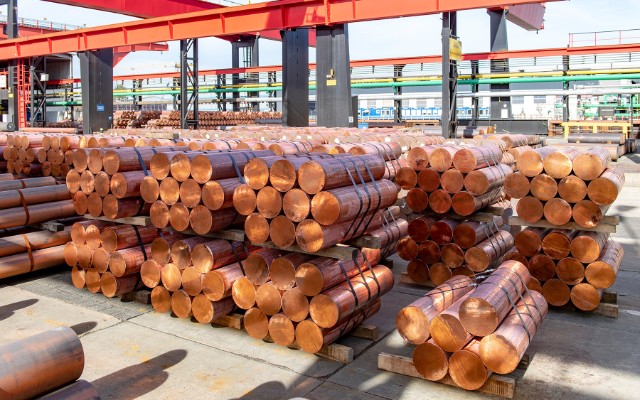
Investors are becoming increasingly negative on copper’s short-term prospects as deteriorating market optics reinforce a gloomy macro picture.
Investment funds have turned net short of the London Metal Exchange (LME) copper contract for the first time since June 2020, mirroring the bearish positioning already established on the CME’s contract.
Even super-bull Goldman Sachs has admitted “we were wrong on price expectations” as LME three-month copper last week sank to a year-to-date low of $7,867 per tonne amid rising LME inventories and ultra-loose time-spreads.
Commodity markets are experiencing the largest de-stocking exercise the complex has ever witnessed as paper sellers join physical sellers in dumping holdings, the bank argues. (“Commodities Views: the great de-stocking”, May 23, 2023)
Goldman has cut its price forecasts but still expects “a resurgence in upside” with a 12-month target of $10,000 per tonne.
[Click here for an interactive chart of copper prices]
Fund positioning suggests many investors think copper could fall further before any price rebound.

Investment funds turned net short of LME copper to the tune of 1,558 contracts in the week to May 19, according to the exchange’s most recent Commitments of Traders Report (COTR).
The last time money managers were collectively so bearish was in the first half of 2020, when the world was reeling from the first wave of Covid-19.
Outright long positions have been slashed from a January high of 59,557 contracts to 35,733 contracts, while outright short positions flexed out to 37,862 contracts earlier this month, the highest level since the LME started publishing its COTR in 2018.
Given copper has hit fresh 2023 lows over the last week, it is likely that trend-following momentum funds will have lifted further their short positions into the price weakness.
Fund managers have been trading the CME copper contract from the bear side since the start of May. Net short positioning was slightly reduced to 16,438 contracts in the week to May 23 but outright short positions continued to hold near the previous week’s three-year high.
The negativity is not specific to copper. Funds have been selling other industrial metals and oil on the same recessionary fears. The amount of managed money in commodity indices has fallen to levels not seen since the early 2000s, according to Goldman.
However, copper seems particularly vulnerable right now with bearish market optics seemingly confirming the macro gloom.

Funds started the year betting on a demand boost for copper and other metals as China fully reopened from its Covid restrictions.
However, the strength of the Chinese recovery, particularly in the manufacturing sector, has disappointed and the early year optimism has faded.
The outlook has also deteriorated in both Europe and the United States in the face of high energy costs, high interest rates and the US government’s fraught debt-ceiling negotiations.
The darkening macro picture is being mirrored in copper’s micro dynamics.
China’s copper imports are running at low levels, the country’s net pull on metal from the rest of the world falling by 12% year-on-year in the first quarter of 2023. Weak preliminary figures for April’s trade suggest no change in pattern.
LME stocks have rebuilt from a mid-April low of 51,175 tonnes to a current 99,700 tonnes with metal arriving at Asian, European and US locations in recent weeks.
LME time-spreads suggest there is plenty more metal available. The benchmark cash-to-three-months period traded out to a super-contango of $70.25 per tonne last week, the widest it’s been in almost two decades.
The International Copper Study Group estimates the global refined copper market registered a hefty 332,000-tonne supply surplus in the first quarter of the year, compared with an 8,000-tonne surplus in the year-ago period.
Goldman Sachs contends the copper market is pricing in a full recession in Western economies, leaving itself vulnerable to a sharp upwards correction if things turn out to be better than expected.
Others are also now starting to look at longer-term buying opportunities.
UBS analysts “have not been perennial copper bulls” but now think the market is approaching a fundamental inflection point with prices close to both marginal costs and incentive pricing.
There is the potential for “violent upside” in prices down the line, according to a May 30 research note from the Swiss bank titled “Copper: getting closer to the buying level”.
Closer but not quite there yet, judging by fund positioning on both sides of the Atlantic.
Until copper’s micro dynamics turn more positive, investors are unlikely to change their bearish stance.
(The opinions expressed here are those of the author, Andy Home, a columnist for Reuters)
(Editing by David Evans)
Comments